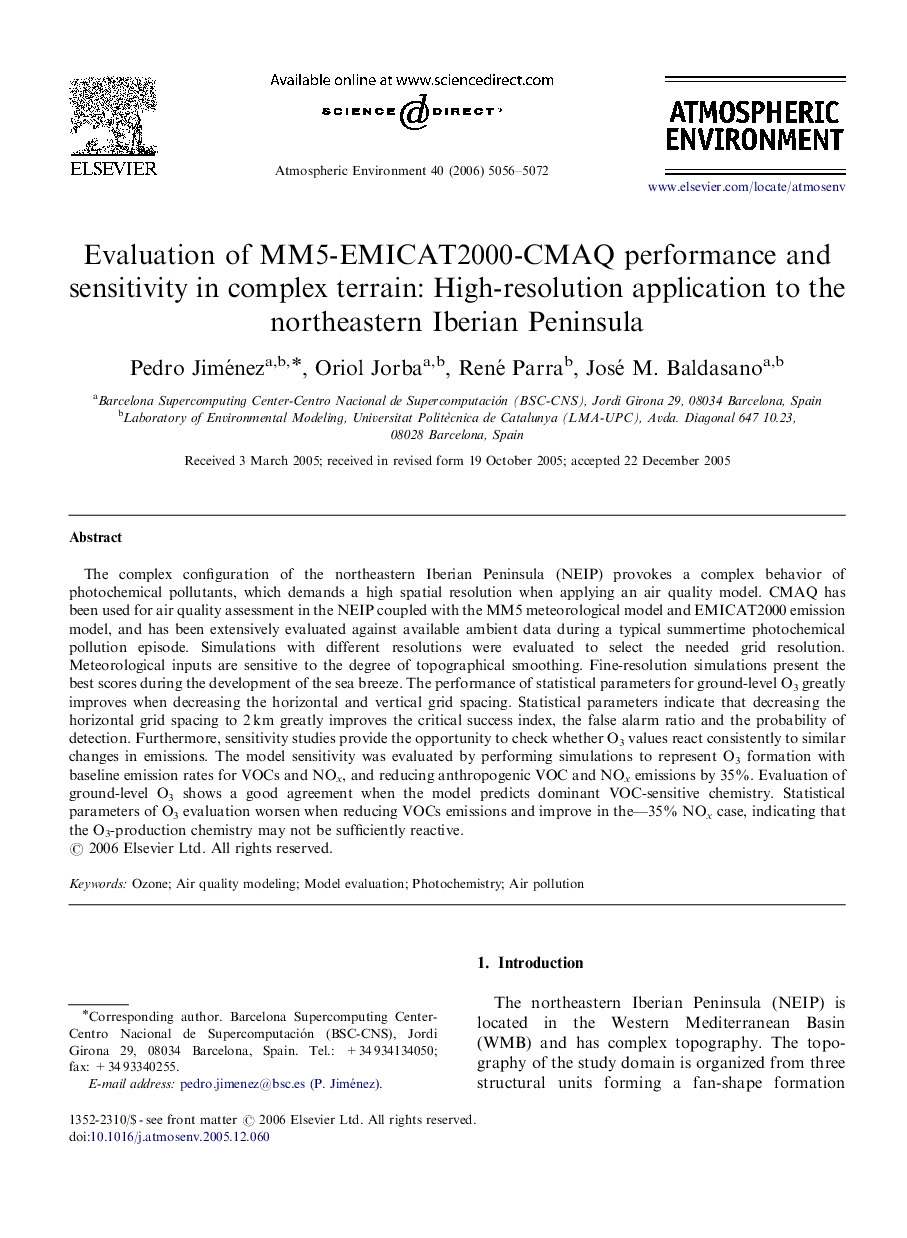| Article ID | Journal | Published Year | Pages | File Type |
|---|---|---|---|---|
| 4444503 | Atmospheric Environment | 2006 | 17 Pages |
The complex configuration of the northeastern Iberian Peninsula (NEIP) provokes a complex behavior of photochemical pollutants, which demands a high spatial resolution when applying an air quality model. CMAQ has been used for air quality assessment in the NEIP coupled with the MM5 meteorological model and EMICAT2000 emission model, and has been extensively evaluated against available ambient data during a typical summertime photochemical pollution episode. Simulations with different resolutions were evaluated to select the needed grid resolution. Meteorological inputs are sensitive to the degree of topographical smoothing. Fine-resolution simulations present the best scores during the development of the sea breeze. The performance of statistical parameters for ground-level O3 greatly improves when decreasing the horizontal and vertical grid spacing. Statistical parameters indicate that decreasing the horizontal grid spacing to 2 km greatly improves the critical success index, the false alarm ratio and the probability of detection. Furthermore, sensitivity studies provide the opportunity to check whether O3 values react consistently to similar changes in emissions. The model sensitivity was evaluated by performing simulations to represent O3 formation with baseline emission rates for VOCs and NOx, and reducing anthropogenic VOC and NOx emissions by 35%. Evaluation of ground-level O3 shows a good agreement when the model predicts dominant VOC-sensitive chemistry. Statistical parameters of O3 evaluation worsen when reducing VOCs emissions and improve in the—35% NOx case, indicating that the O3-production chemistry may not be sufficiently reactive.
